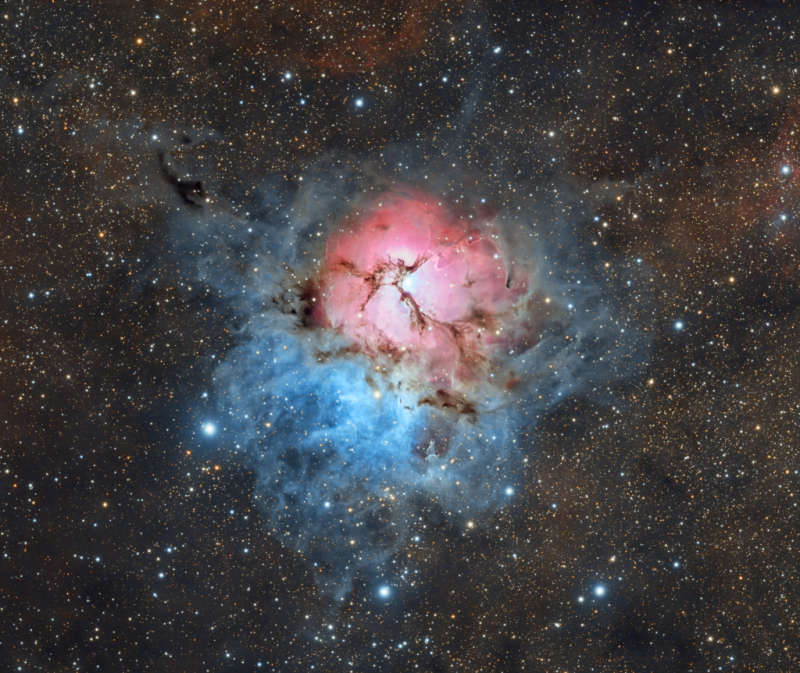
|
Credit & Copyright: Alessandro Cipolat Bares
Explanation:
The
beautiful Trifid Nebula
is a cosmic
study in contrasts.
Also
known as M20,
it lies about 5,000 light-years away toward the
nebula rich constellation Sagittarius.
A star forming region in the plane of our galaxy,
the Trifid does illustrate three different types of
astronomical nebulae;
red emission nebulae dominated by
light from hydrogen atoms,
blue reflection nebulae produced
by dust reflecting starlight, and
dark nebulae where
dense dust clouds appear in silhouette.
But, the red emission region roughly separated into three
parts by obscuring dust lanes is what lends the Trifid its
popular name.
Pillars and jets sculpted by newborn stars, above and right of
the emission nebula's center, appear in famous Hubble Space Telescope
close-up
images of the region.
The Trifid Nebula is about 40 light-years across.
Too faint to be seen by the unaided eye, in this deep telescopic view
it almost covers the area of a full moon on planet Earth's sky.
|
January February March April May June July August September October November December |
| ||||||||||||||||||||||||||||||||||||||||||||||||
NASA Web Site Statements, Warnings, and Disclaimers
NASA Official: Jay Norris. Specific rights apply.
A service of: LHEA at NASA / GSFC
& Michigan Tech. U.
Based on Astronomy Picture
Of the Day
Publications with keywords: M 20 - Trifid nebula
Publications with words: M 20 - Trifid nebula
See also:
